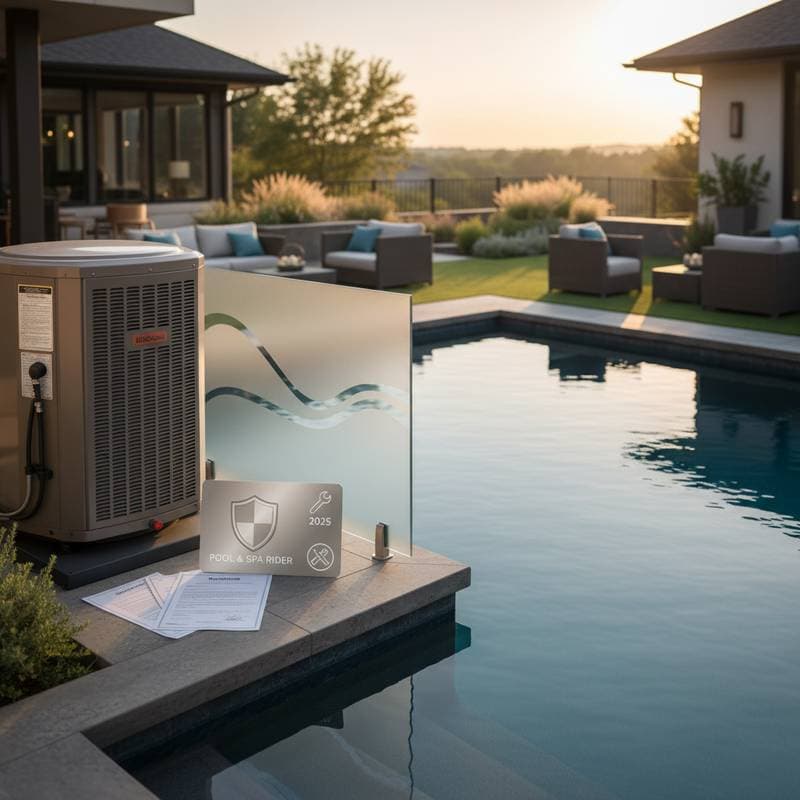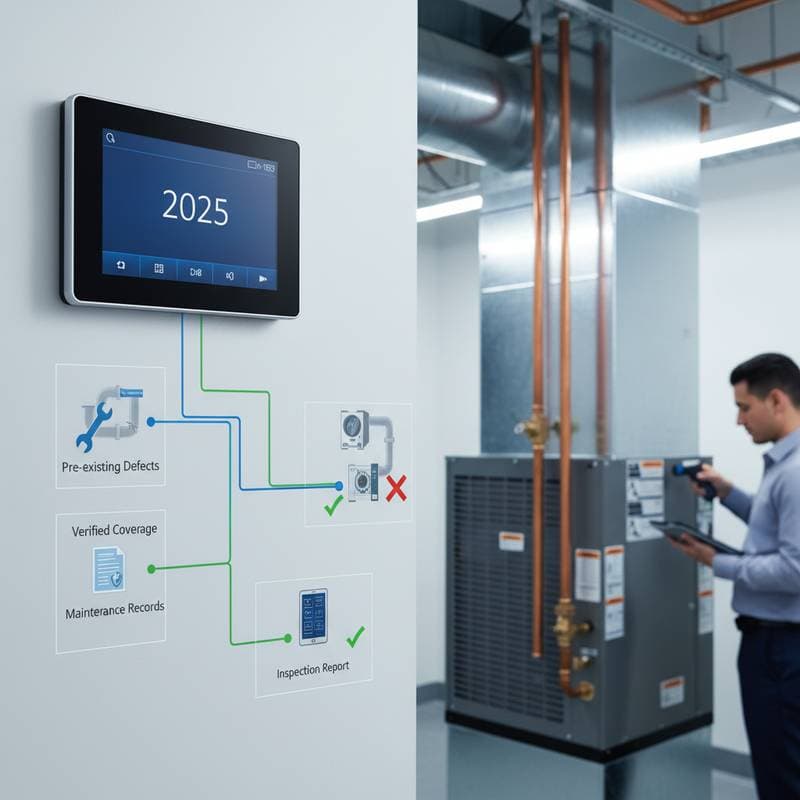Understanding Pool Heater Coverage in Home Warranties
Most homeowners believe a standard home warranty plan includes protection for every major system, such as the pool heater. However, coverage for pool heaters remains limited, optional, or bound by specific conditions in most policies. This article clarifies the scope of pool heater coverage, associated costs, verification methods, and scenarios where adding protection proves essential.
Determining When to Add Pool Heater Coverage
Consider adding pool heater coverage if the unit exceeds three years of age, exhibits diminished heating performance, or incorporates gas or heat pump elements prone to expensive repairs. Coverage becomes particularly beneficial for heaters integrated with saltwater chlorination systems, where accelerated corrosion and sensor malfunctions frequently occur.
Homeowners in regions with extended warm seasons experience greater equipment wear due to continuous operation. In contrast, those in temperate climates might forgo coverage for seasonally used heaters, yet even intermittent operation warrants protection for larger or more intricate installations.
Analyzing Costs and Influencing Factors
Pool heater coverage functions as an optional add-on to the base home warranty plan, incurring an additional annual premium. The following table outlines typical national pricing ranges.
| Scope Item | Material Cost Range | Labor Cost Range | Total Range | Notes on Drivers |
|---|---|---|---|---|
| Home warranty base plan | N/A | N/A | $400 - $700 per year | Encompasses HVAC, plumbing, and electrical systems |
| Pool and spa add-on | N/A | N/A | $150 - $350 per year | Varies by geographic region and provider |
| Service call fee | N/A | N/A | $75 - $125 per visit | Applies to each service incident |
| Heater replacement (no warranty) | $1,200 - $3,000 | $600 - $1,200 | $1,800 - $4,200 | Depends on unit size and fuel type |
Factors Driving Costs
- Material Quality: Gas-fired heaters generally exceed the expense of electric resistance or solar alternatives.
- Installation Complexity: Units positioned near retaining walls or in confined equipment areas demand extended labor time.
- Environmental Conditions: Extended gas line runs, necessary electrical modifications, or exposure to corrosive saltwater environments elevate both risk and expense.
Navigating Safety Requirements, Permits, and Building Codes
Pool heaters interconnect with gas, electrical, and plumbing infrastructures, each governed by local building codes. Essential considerations include the following:
- Gas-Fired Units: Connections require gas lines appropriately sized for the heater's BTU output to prevent incomplete combustion or soot accumulation.
- Electric Units: Dedicated circuits equipped with ground-fault circuit interrupter (GFCI) protection remain mandatory; integration with lighting or pump circuits proves unsafe.
- Ventilation Standards: Adequate venting prevents carbon monoxide accumulation and safeguards adjacent structures from heat damage.
- Permitting Processes: New installations or replacements necessitate permits, with inspections verifying clearances, electrical bonding, and venting adherence.
Home warranty providers typically exclude coverage for failures stemming from code noncompliance or unpermitted modifications. In cases of claim denial due to code violations, engage a licensed contractor to rectify the installation prior to resubmitting for coverage.
Establishing a Maintenance Routine for Longevity
Proper maintenance extends a pool heater's service life to ten to twelve years while ensuring compliance with warranty terms. Adhere to this schedule to minimize breakdowns.
Post-Installation Checks
- Confirm gas pressure, water flow rates, and vent clearances meet specifications.
- Engage a licensed electrician to validate bonding and grounding integrity.
Seasonal Inspections
- Flush the heat exchanger using a mild acid solution or scale remover.
- Test ignition sequences and sensor functionality prior to seasonal activation.
- Clear debris from air intake and exhaust vents to maintain airflow.
Annual Professional Service
- Schedule a technician to assess combustion efficiency and inspect safety switches.
- Examine electrical connections for signs of corrosion or wear.
- Document water chemistry parameters and retain records alongside warranty documents.
Evaluating Replacement Timing
Opt for replacement when repair expenses surpass half the cost of a new unit, as this approach yields long-term savings. Many home warranties reimburse replacement costs up to a limit of $1,500 to $2,000.
Comparing Contractor Bids for Heater Replacement
The table below illustrates a sample bid comparison for a 250,000 BTU gas heater with a cupro-nickel heat exchanger.
| Line Item | Specification or Scope | Contractor A | Contractor B | Contractor C | Variance Notes |
|---|---|---|---|---|---|
| Heater Model | 250k BTU gas, cupro-nickel exchanger | $3,200 | $2,950 | $3,400 | Differences in material quality |
| Labor | Removal and installation | $750 | $1,000 | $900 | Influenced by access challenges |
| Permit and Inspection | Gas and venting verification | $150 | $200 | $175 | Local fee variations |
| Warranty Add-On | Pool and spa rider | $180/year | $200/year | $175/year | Based on coverage duration |
Review bids meticulously, ensuring inclusion of permits and confirmation of warranty compatibility. An installation that fails inspection risks nullifying warranty protections entirely.
Securing and Maintaining Coverage
Review your current policy to identify coverage gaps, specify your heater's configuration, and request a pool equipment rider from the provider. Maintain detailed logs of all maintenance activities and conduct pre-season inspections to uphold eligibility.
For policies lacking pool coverage, inquire about midterm add-on options; providers often approve upgrades following a brief waiting period. The modest annual premium frequently offsets expenses from a single service call.
Pool heaters represent significant investments reliant on balanced water chemistry, compliant venting, and consistent inspections. Through confirmed coverage and thorough documentation, homeowners extend equipment durability and sidestep unexpected repair bills for seasons ahead.



